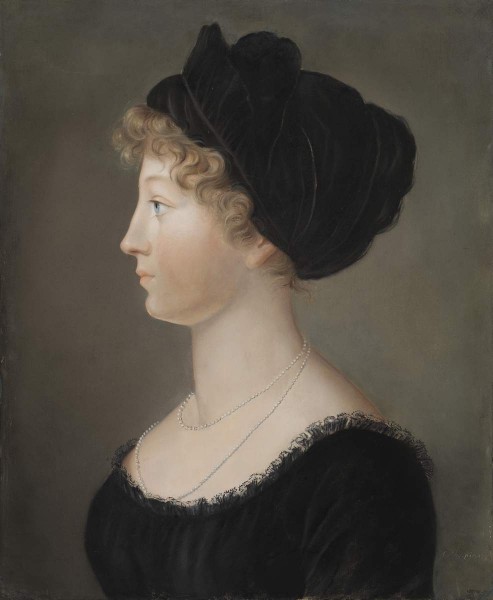Artist – ORT

Empress Elizaveta Alekseevna (nee Louise Maria Augustus, Princess of Baden; 1779-1826), daughter of the Margraf of Baden Karl Ludwig. In October she arrived in St. Petersburg, in September 1793 she accepted Orthodoxy and married Grand Duke Alexander Pavlovich. From 1801 – Empress. She was engaged in charitable activities.
+ About the restoration of the work
– Hide the text about restoration
The state of safety before restoration:
The picture made by pastel on paper with oil soil entered the restoration workshop stretched on a deaf subframe with edges glued to the end of the subframe by animal glue. Due to the significant tension, the voltage arose led to the appearance of ruptures (schisms) of the foundations along the upper edge, in the corners and in the center of the lower edge. Several fragments along the edges of the gaps had a tendency to fall out. Earlier, attempts were made to strengthen the gaps on the back of mycalence paper and wheat glue without removing the exhibit from the subframe – this led to the emergence of significant deformations with the scuffs and losses of the upper colorful layer. Traces of numerous small spots of bioperation (“Foxing”) were observed over the entire surface).
Complex of the activities:
For high -quality strengthening of gaps and in order to weaken tension, it was necessary to remove the exhibit from the subframe. Removal from the subframe was carried out with a gradual weakening of the base tension under the action of vapors (water-spirt glycerin) in the chamber and uniform perforating of the edges from corners to the middle of the parties. Strengthening the breakdown of the base is made according to the traditional methodology for the restoration of exhibits on a paper basis: Japanese paper and wheat glue. The work was complicated by the fact that the colorful layer was introduced into the soil, which consists of lead white on an oil binder, losing elasticity, hard and fragile. There was a well -known risk that the corner and linear horizontal craquelure could intensify when the paper base is moistened.
The exhibit was duplicated on Japanese paper using wheat glue, mounting was made on a tablet with a rigid coating with edges of Japanese paper. In order to remove traces of bioporations (small dark spots, especially noticeable in the image of the face), tinting was carried out by borrowing an author’s colorful layer from the edges. In places of loss of soil and a colorful layer, restoration soil for the pastel of the company “LASCAUX” was brought; The loss of the colorful layer was filled with pastel pencils.
Keeping a story. Restoration workshop of the Russian Museum – 100 years. SPb, 2022. With. 153.
Leave a Reply